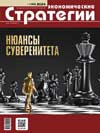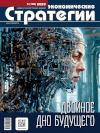Security Risks and Concerns in Indo-Pacific Reg
DOI: 10.33917/es-2.194.2024.32-37
The authors investigated the security situation (military, economic, energy, environmental, food, etc.) in the Indo-Pacific region using international expert surveys in the form of interviews in 16 countries, using a historical approach to show the situation in dynamics, comparative analysis of statistical data, as well as content analysis of scientific literature, publications in the media and in-depth analysis of texts using the Sorbonne method. The analytical materials prepared by the authors are confirmed by empirical data obtained as part of the research work of the international project “Dialogue Partnership as a factor of stability and integration” in 16 Eastern countries: Brunei, Vietnam, India, Indonesia, China, Malaysia, Mongolia, Myanmar, Nepal, RF, Singapore, the USA, Thailand, Philippines, South Korea and Japan, in the pre- and post-ovoid period.
References:
1. Kompleksnaya kharakteristika situatsii v ATR [A Comprehensive Description of the Situation in the Asia-Pacific Region]. Moscow, Academia, 2016, 340 p.
2. ATR glazami ekspertov (mezhdunarodnaya ekspertiza 2005–2019 gg.) [The Asia-Pacific Region Through the Eyes of Experts (International Expertise 2005–2019)]. Moscow, Academia, 2019, 350 p.
3. Masasi Murano, Ankito Panda i Dzhenni Taun. Novaya raketnaya era v Indo-Tikhookeanskom regione [A New Missile Era in the Indo-Pacific Region]. Moskovskiy Tsentr Karnegi, available at: https://gatotca.oyi.my.id/find/a-new-missile-age-in-the-indopacific-carnegie-endowment-for
4. Sukin L. Kogda yadernoe prevoskhodstvo perestaet byt’ prevoskhodstvom: Peresmotr yadernogo balansa sil [When Nuclear Superiority Ceases to be Superiority: A Revision of the Nuclear Balance of Power]. Moskovskiy Tsentr Karnegi, available at: https://mail.yandex.ru/?uid=4361772#message/184366109745546487
5. Rybin A. NYT: Veroyatnost’ voyny v Indo-Tikhookeanskom regione seychas samaya vysokaya so Vtoroy mirovoy [The Probability of War in the Indo-Pacific Region is Now the Highest Since World War II]. Rossiyskaya gazeta, 2023, 1 marta, available at: https://rg.ru/2023/03/01/nyt-veroiatnost-vojny-v-indo-tihookeanskom-regionesejchas-
samaia-vysokaia-so-vtoroj-mirovoj.html
6. Balandin R. Syurpriz ot Dzho Baydena: pochemu SShA nachali postavlyat’ oruzhie Tayvanyu po “ukrainskoy” skheme? [Surprise From Joe Biden: Why Did the United
States Start Supplying Weapons to Taiwan According to the “Ukrainian” Scheme?]. TASS, 2023, 15 avgusta, available at: https://tass.ru/opinions/18501723
7. Delegatsiya kongressmenov SShA pribyla na Tayvan’ [A Delegation of US Congressmen Arrived in Taiwan]. RIA Novosti, 2022, 14 avgusta, available at: https://ria.ru/20220814/tayvan-1809515164.html
8. 900 voennykh baz SShA po vsemu miru. V kakikh stranakh ikh bol’she vsego? [900 US Military Bases Around the World. Which Countries Have the Most of Them?].
Dzen, 2023, 11 yanvarya, available at: https://dzen.ru/a/Y76U9T_c6WqJsHnc
9. Vysotskiy V.I. Neft’ i gaz. Zapasy. Dobycha. Potreblenie, eksport i import: Informatsionnyy obzor [Oil and Gas. Stocks. Extraction. Consumption, Export and Import. (Information Overview)]. Moscow, Rosgeologiya. VNIIZARUBEZhGEOLOGIYA, 2022, 40 p.














